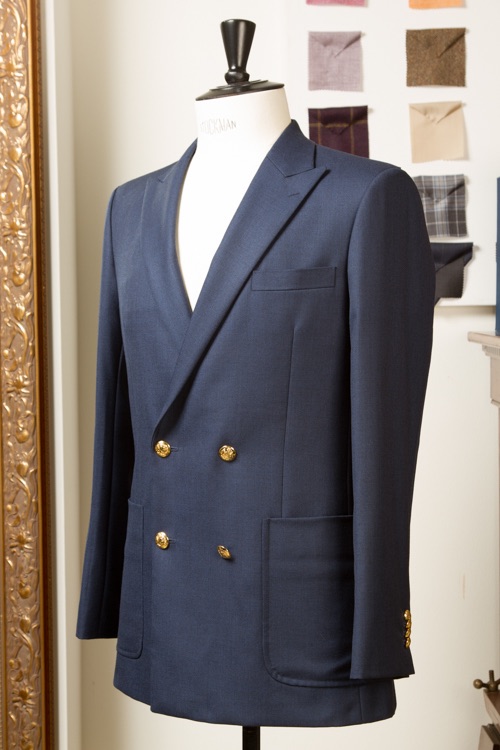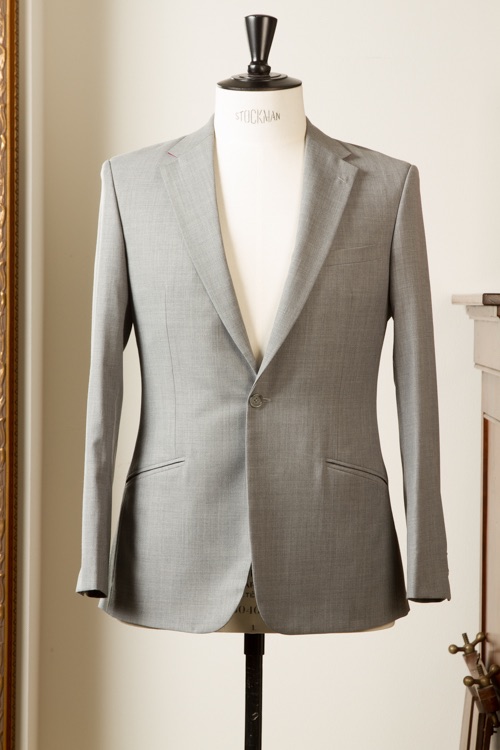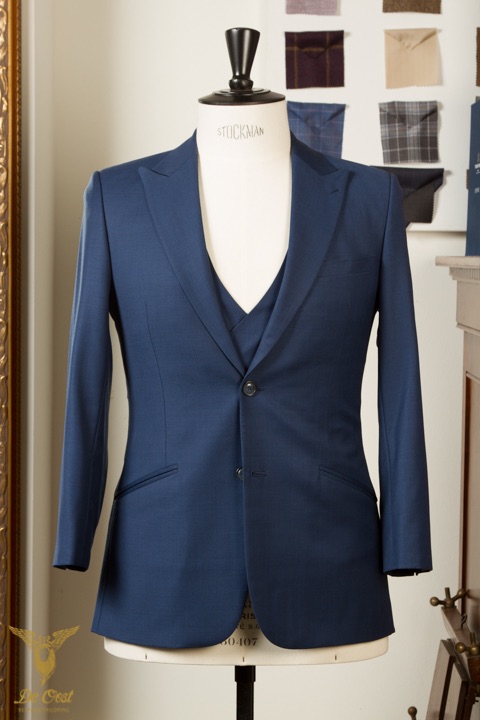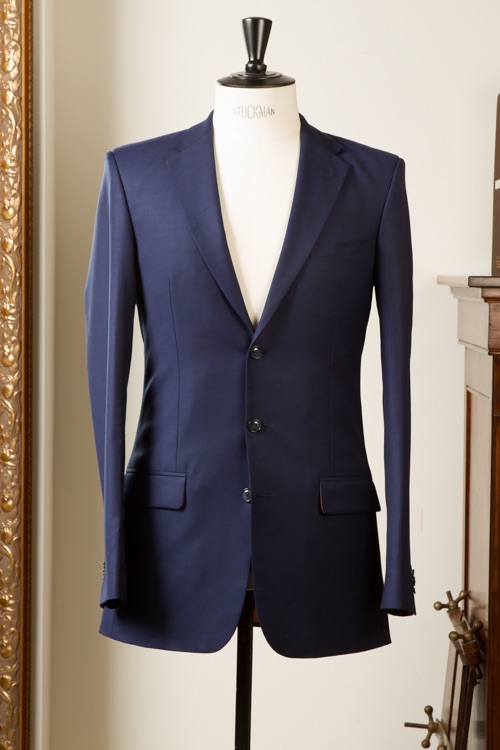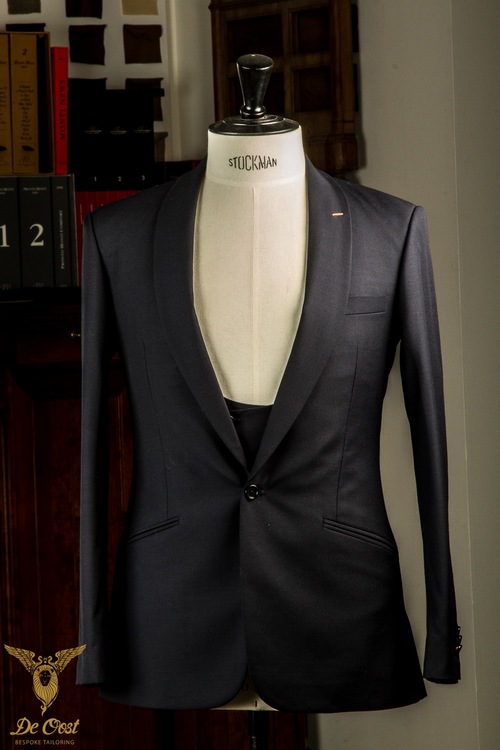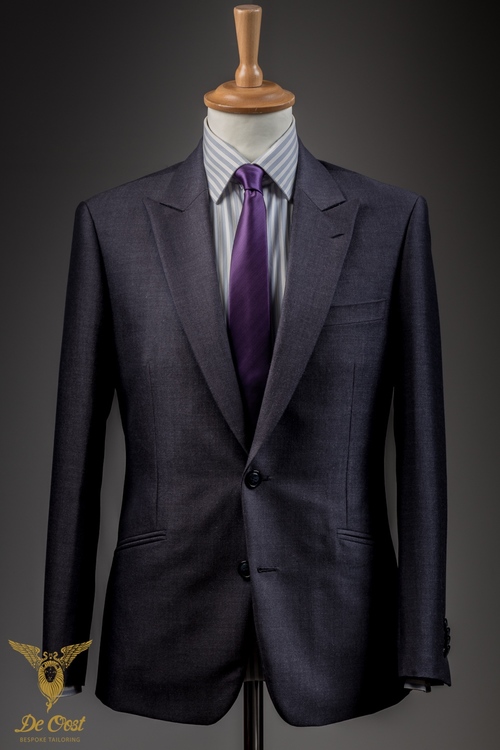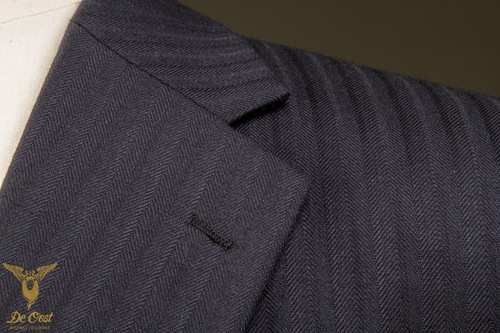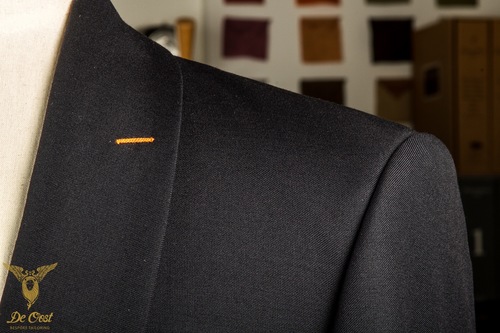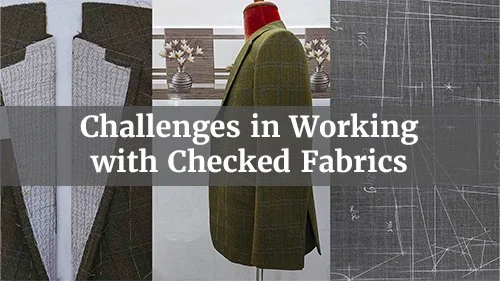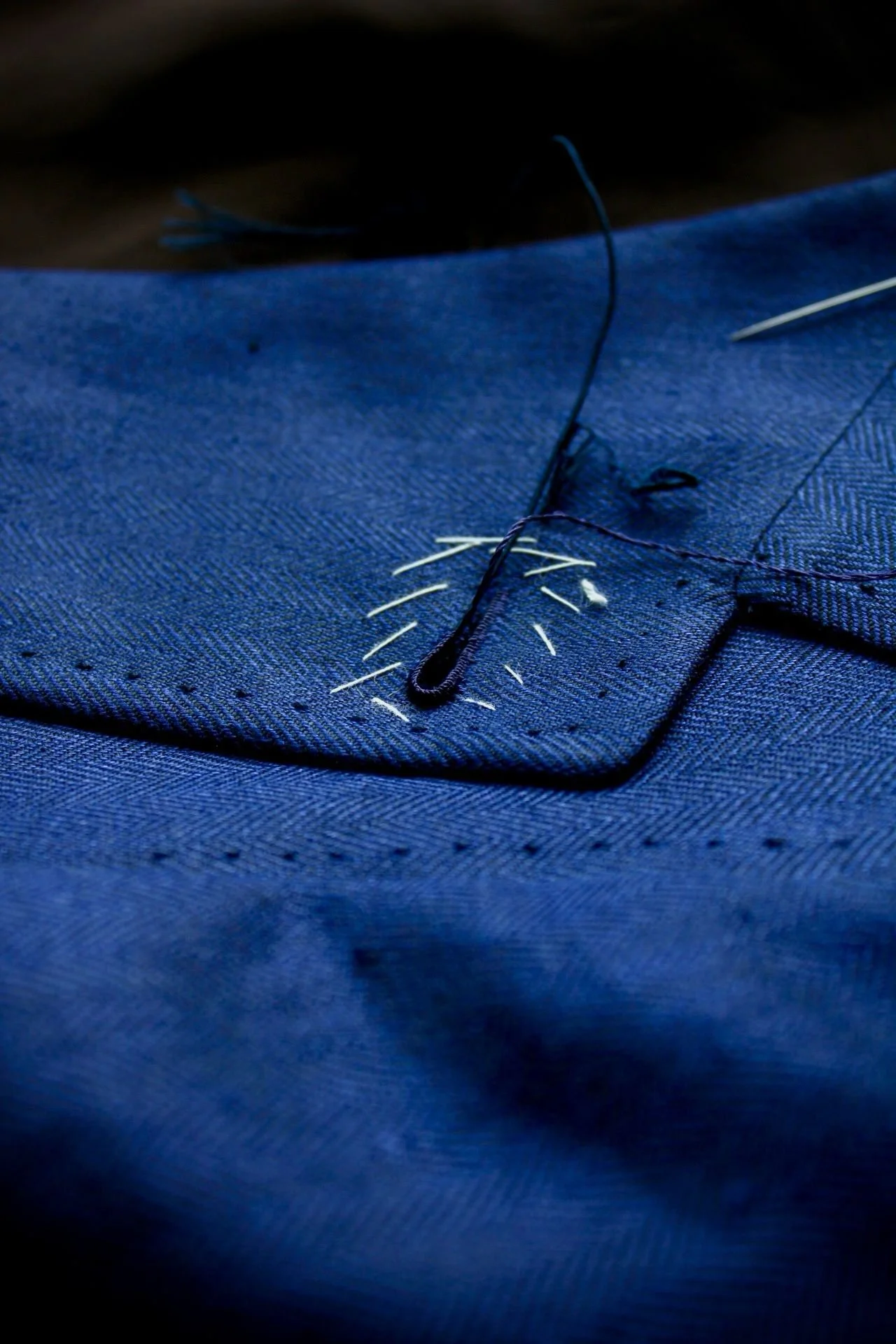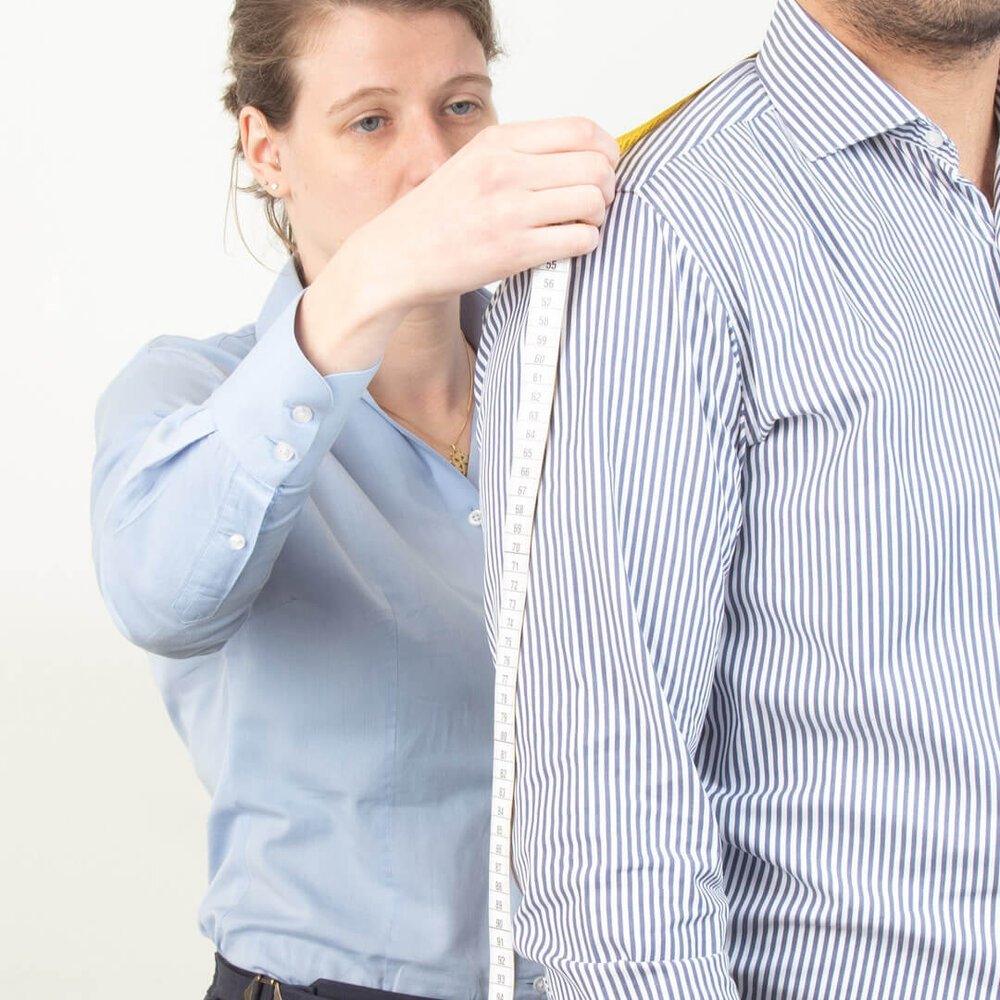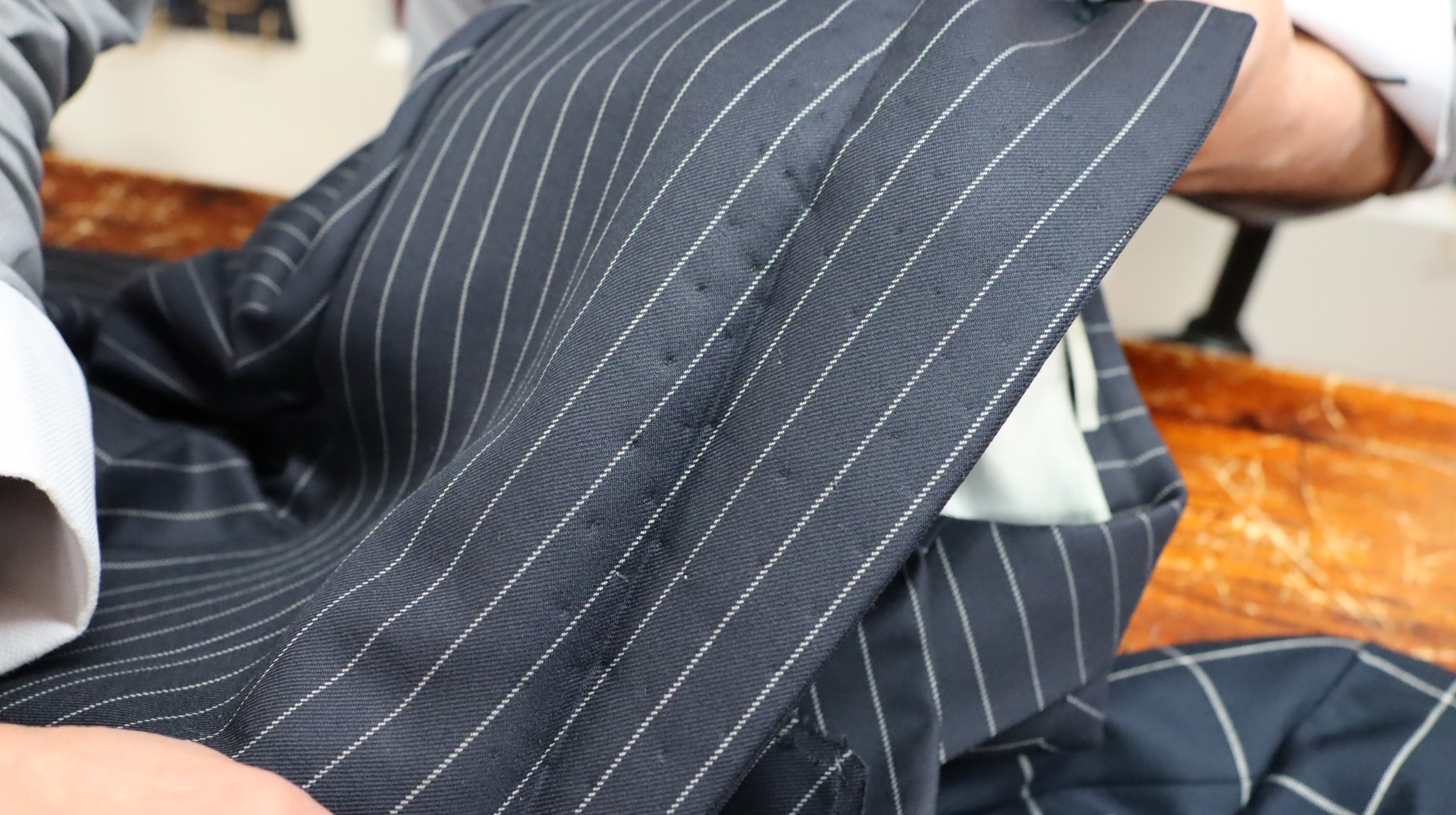There are many possible variations in the choice of the style, the garments and the details of a suit. Of course, during your appointment at De Oost we will make sure you make the right decisions. This will result in an exactly right fitting suit, that has all the details you have asked for. To give you an impression of all the possible options, we will share some of our knowledge in this blog.
The Cut
The silhouette of a suit is its outline. Tailored balance created from a canvas fitting allows a balanced silhouette, so a jacket does not need to be buttoned and a garment is not too tight or too loose. A proper garment is shaped from the neck to the chest and shoulders to drape without wrinkles from tension. Shape is the essential part of tailoring that often takes hand work from the start. The two main cuts are:
Double-breasted suits, a conservative design with two vertical rows of buttons, spanned by a large overlap of the left and right sides.
Single-breasted suits, in which the sides just meet at the front down a single row of buttons.
Double-Breasted
Double Breasted Unlined Hopsack Sports Jacket. .
The term double-breasted refers to a coat or jacket with wide, overlapping front flaps and two parallel columns of buttons or snaps. In modern double-breasted coats, one column of buttons is decorative, while the other functional. The other buttons, placed on the outside edge of the coat breast, are either decorative (non-functional) or functional, allowing the overlap to fasten reversibly, right lapel over left lapel.
To strengthen the fastening, a functional inner button, called the jigger, is usually added to parallel fasten the over-lapped layers together from the inside. The original double-breasted jacket has six buttons, with three to close. This originated from the naval reefer jacket. The four-button double-breasted jacket that buttons at the lower button is often called the “Kent”, after the man who made it popular—the Duke of Kent.
Single-Breasted
Single-Breasted Blue Mohair Suit. Click here to see the complete portfolio.
The term single-breasted refers to a coat, jacket or similar garment having one column of buttons a narrow overlap of fabric. In contrast, a double-breasted coat has a wider overlap and two parallel rows of buttons. Single-breasted suit jackets and blazers typically have two or three buttons (jackets with one or four buttons exist, but are not common), and a notch lapel.
However, from the 1930’s onwards, peaked lapels, often on a single button jacket, have been variably in fashion, and this is now a classic. The width of the lapels is one of the most changeable aspects of this jacket, and narrow peak lapels on single-breasted jackets became popular during the 2000’s. Good tailoring anywhere in the world is characterised by strongly tapered sides and minimal shoulder, whereas often rack suits are padded to reduce labour. More casual suits are characterized by less construction and tailoring, much like the sack suit is a loose American style.
Jacket Buttons
One Button. 1-button Mid Grey Jacket.
Two Buttons. 2-Button Blue Sharkskin Suit With Champagne Lining.
Three buttons. 3-button Classic Wedding Suit Full Canvas French Cavalry Blue.
Most single-breasted suits have two or three buttons, and one or four buttons are unusual. Placement and style of buttons are critical to the overall impression of height conveyed by the jacket. The centre or top button will typically line up quite closely with the natural waistline. Double-breasted jackets have only half their outer buttons functional. The second row is for display only, forcing them to come in pairs. Rare jackets can have as few as two buttons, six buttons are typical, with two to button; the last pair floats above the overlap. The three buttons down each side may in this case be in a straight line (the ‘keystone’ layout) or more commonly, the top pair is half as far apart again as each pair in the bottom square. A four-button double-breasted jacket usually buttons in a square. The layout of the buttons and the shape of the lapel are co-ordinated in order to direct the eyes of an observer. For example, if the buttons are too low, or the lapel roll too pronounced, the eyes are drawn down from the face, and the waist appears larger.
Jacket Lapels
Jacket lapels are the folded flaps of cloth on the front of a jacket or coat, and are most commonly found on formal clothing and suit jackets. Usually they are formed by folding over the front edges of the jacket or coat and sewing them to the collar, an extra piece of fabric around the back of the neck. There are three basic forms of lapels: notched, peaked and shawl. Notched lapels, the most common, are usually seen on business suits. Peaked lapels are more formal, and nearly always used on double-breasted jackets or coats. Shawl lapels are even more formal and you will hardly ever see this kind of lapels on anything other than dress wear.
Notched Lapel. Navy Herringbone suit with notched lapels, slanted pockets, purple lining and three kissing buttons.
Peak Lapel. Mohair Suit Steel Blue 2 buttons peak lapels slanted pockets.
Shawl Collar. 1-button contemporary suit jacket navy blue with shawl collar slanted jetted pockets and 3*2 waistcoat.
In case that you choose to have a garment tailored by De Oost, everything is possible. The parts of the suit covered in this blog are mentioned to give an impression of the possibilities. In case you have a question about a specific desire, do not hesitate to give us a call (+31-(0)20-6815792).
